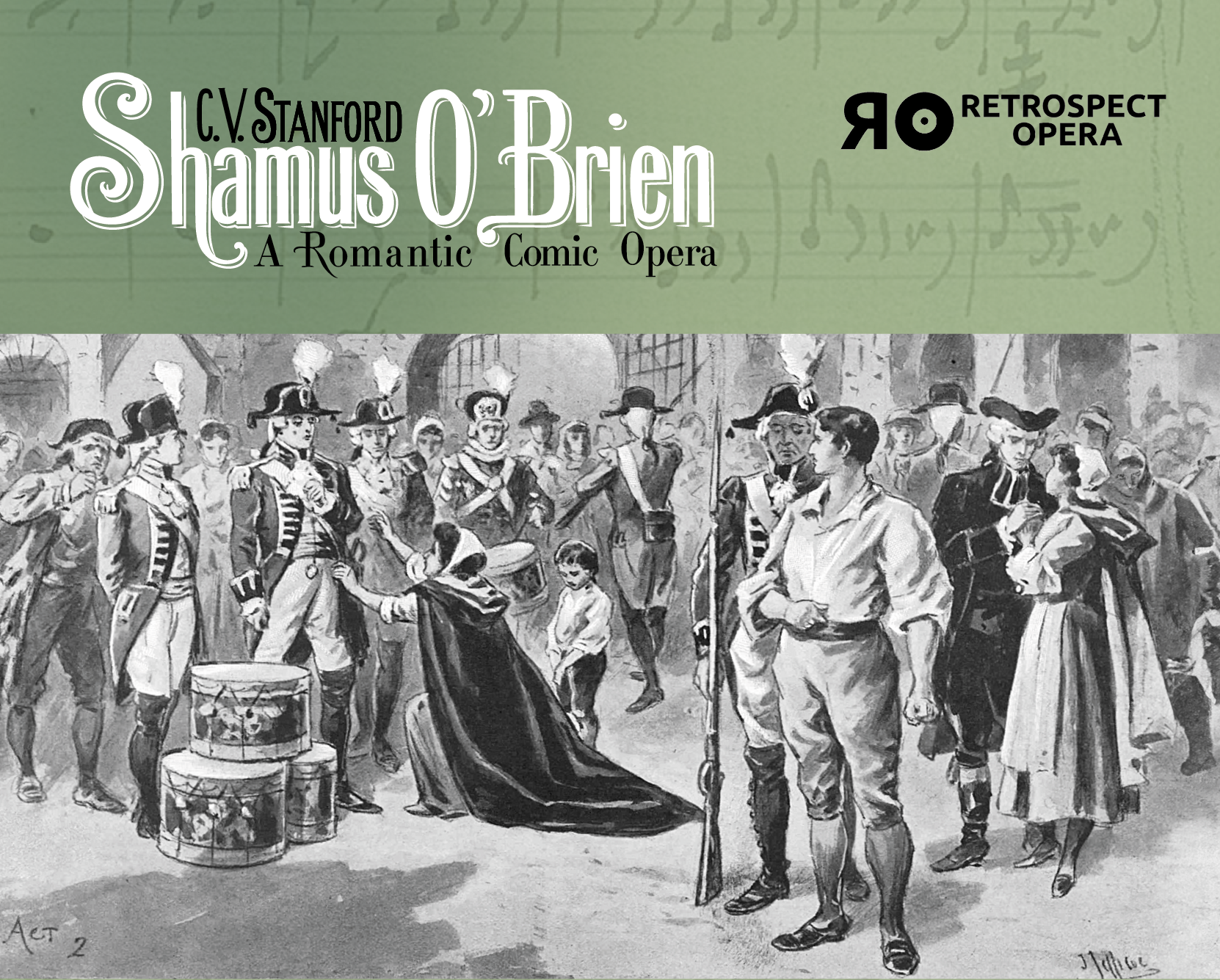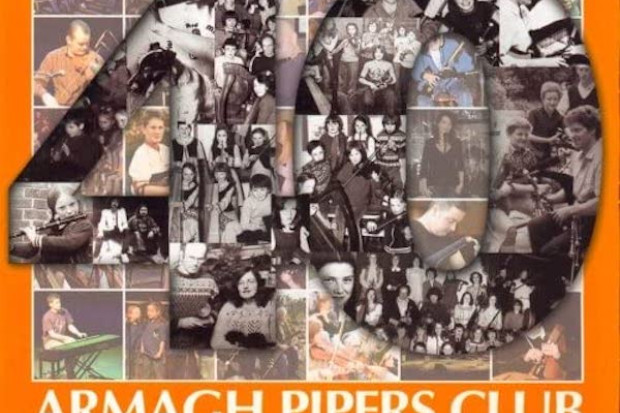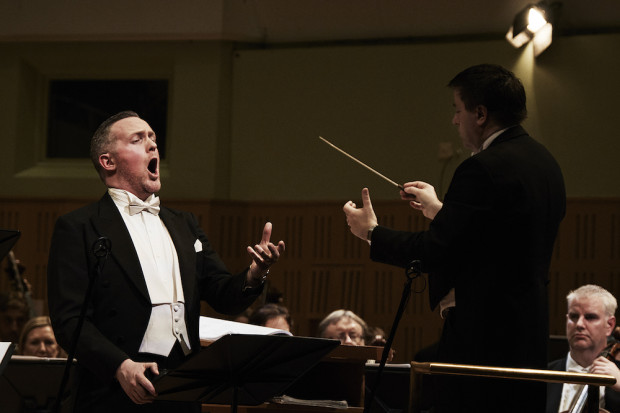
Cover art for Retrospect Opera's release of 'Shamus O'Brien'.
The Coloniser’s View: Stanford's 'Shamus O'Brien'
This year’s centennial of Charles Villiers Stanford’s death is encouraging a number of labels and performing ensembles to explore his output. Beyond the church music and pedagogical work for which he’s best known nowadays, the Anglo-Irish composer’s output included chamber music, concertos, seven symphonies and nine completed operas, many integrating Irish melody and mode.
Now this renewed interest sees Retrospect Opera release the first recording of Stanford’s comic opera Shamus O’Brien with an Irish cast and the Orchestra of Scottish Opera under David Parry. Set in the aftermath of the 1798 rebellion, it tells of an Irish rebel who consistently outwits the British soldiers. Stanford’s fourth published opera, it was his first to enjoy unqualified success, with a run of some eighty performances following its premiere, a subsequent tour of Britain and Ireland and even performances on Broadway. Stanford pulled it in response to the Irish political situation around 1916, perhaps fearing that his Unionist sympathies would be called into question or (more naïvely) that it may itself foment rebellion. Performances resumed after his death, but were rare and dwindled out around the 1930s, so this recording represents an attempted restoration.
It’s easy to understand the work’s early popularity: it’s marked by an irresistible tunefulness, its songs catchy and light. The libretto, by the Longford-born writer George Henry Jessop, is an entertaining story of clever (if stereotyped) Irish rebels told in a vivid (and again stereotyped) Hiberno English. Stanford’s incorporation of Irish melodies and modes is colourful and, like his symphonic writing, integrated in service of the operatic mould. Stanford was a conservative composer but a sophisticated one, and though his writing is never particularly daring, it is assured and imaginative, blending the melodic idiom with operatic harmony.
Another well-received aspect of the opera in its day was the inclusion of the uilleann pipes – during the Act I finale, the score calls for ‘the old piper with his pipes’, and according to the liner notes with the album, this part, usually performed by an Irish piper, was of particular note to early critics. On this recording the part is played by Jarlath Henderson. It’s a nice moment, but rendered surprisingly bare by the reality of a studio recording minus the vivid onstage dance.

Stanford playing pipes – a sketch from the Illustrated Sporting and Dramatic News, 11 April 1896 (from the sleevenotes for Shamus O’Brien).
Opposing sides
The parts are well sung, with Ami Hewitt’s Kitty (O’Brien’s sister-in-law) providing an early moment of sentimental longing with ‘Where is the Man’. As the immoral Mike Murphy, jealous of O’Brien and collaborating with the English, Andrew Gavin is enjoyably cartoonish. In the second act the English Captain Trevor, played by Joseph Doody, alternately pines for Kitty and mourns his responsibility to kill O’Brien. These opposing sides are set in song with a languid 6/8 jig melody, answered by a rhythmically tighter 3/4 with march-like motifs. On the nose? Yes, but effective and in keeping with the tradition of the work.
No such internal conflict exists for the title part. O’Brien is the sort of protagonist who always makes the right decision, who’s cleverer and luckier than all around him, and is caught only when he gives himself up to spare his village. (‘Back, friends, back, for the fight’s not fair – / Only warm hearts here – only cold steel there!’) In the role, Brendan Collins carries the commanding presence he needs, particularly in dramatic moments, and his turn in disguise, outwitting the British soldiers while playing the village fool, is amusing.
This may be a story of Irish rebellion, but the opera goes out of its way to exonerate the colonising British. Captain Trevor is there solely to do his duty, and demme him if he’ll do any more. ‘If you would only keep peace on your island,’ he implores in the Act I Finale, ‘You’d never see either bayonet or gun.’ No, the only true villain in the story is Mike Murphy, who’s both jealous of O’Brien for marrying Nora, and greedy for monetary reward. The Irish characters can be described with the handful of adjectives generally ascribed to stereotypes of the day: Mike Murphy is conniving; most of the rest are plucky, with Kitty in addition being coquettish. It’s all the drama and character of a newspaper comic, albeit one with a murder at the end.
Shamus O’Brien is a coloniser’s romanticised view of an anti-colonial rebel. There’s no shortage in the operatic canon of these kinds of depictions, though (unlike some) the ones in this work are no longer as harmful as they once were. For all the sophistication of the music and the quality of the melodic writing, though, the overall impression – particularly for an Irish listener – is likely to feel silly and patronising, somewhat like watching the kind of Disney movie that Disney would rather you didn’t talk about any more. The opera’s view of the Irish is two-dimensional at best, but Stanford’s love of Irish music is clear. The inclusion of the uilleann pipes demonstrates it, as does his facility for folding a distinctly Irish sound into his Late Romantic vocabulary. While it may be that the work’s heyday has passed, it is at least good fun, even if it may not always be clear whether you’re smiling or gritting your teeth.
Shamus O’Brien by Charles Villers Stanford is available to purchase from Retrospect Opera. Visit https://retrospectopera.org.uk.
Subscribe to our newsletter here.
Published on 26 April 2024
Brendan Finan is a teacher and writer. Visit www.brendanfinan.net.











